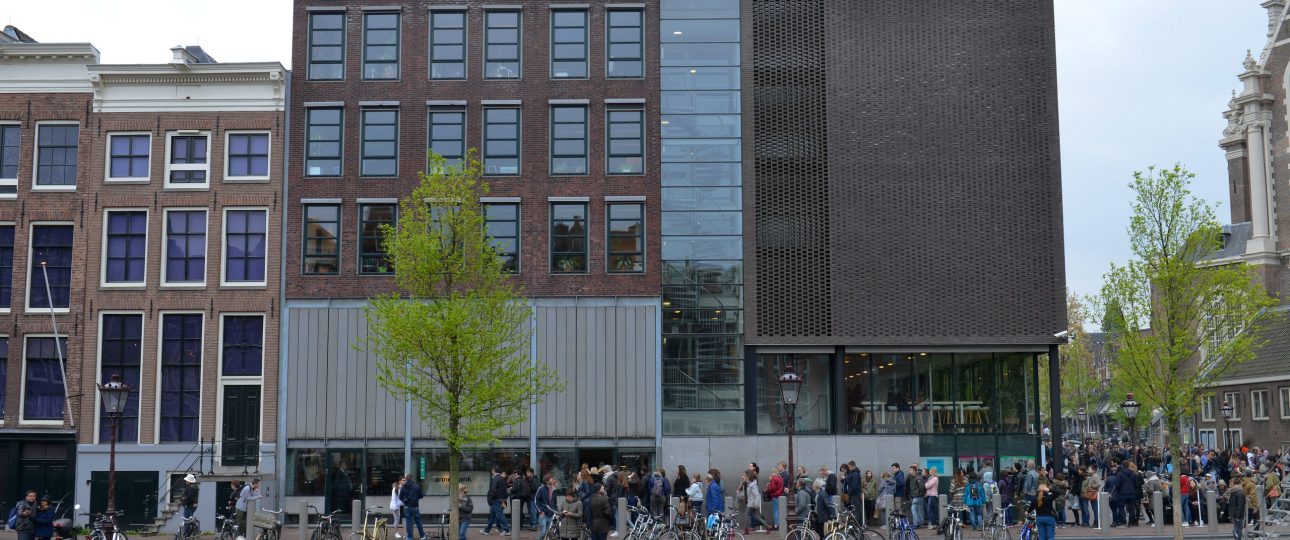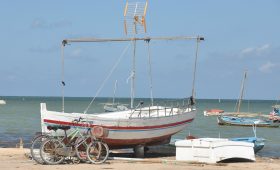Introduction to the Anne Frank House
The Anne Frank House is a significant historical site located in Amsterdam, Netherlands. This museum is dedicated to the memory of Anne Frank, a Jewish girl who documented her life in hiding during World War II in her now-famous diary. Her writings have resonated with millions globally, offering a poignant glimpse into the human experience during one of history’s darkest periods. A visit to the Anne Frank House is both a journey through history and a testament to resilience and hope.
Historical Significance
The Anne Frank House, originally constructed in 1635 by Dirk van Delft, holds immense historical importance. The building’s canal-side façade was renovated in 1740. During World War II, it became the hiding place for Anne Frank, her family, and four others, concealed in the “Secret Annex” at the rear of the building. This annex, hidden from view by surrounding structures, provided refuge for over two years. Anne’s diary, published as “The Diary of a Young Girl,” remains one of the most widely read books, highlighting the impacts of war and discrimination.
The Story of Anne Frank
Anne Frank was born on June 12, 1929, in Frankfurt, Germany. Her family relocated to Amsterdam in 1934 to escape the rising antisemitism in Germany. When the Nazis occupied the Netherlands in 1940, the Frank family went into hiding in the secret annex behind Otto Frank’s business premises on Prinsengracht. During their time in hiding, Anne documented her thoughts and experiences. Tragically, they were discovered in 1944, and Anne died in the Bergen-Belsen concentration camp in March 1945, shortly before its liberation.
What Makes the Anne Frank House Unique?
Visiting the Anne Frank House offers a unique experience due to several factors:
- Emotional Impact: Walking through the preserved rooms where Anne lived evokes a deep emotional connection to the historical events.
- Preserved History: The museum has meticulously preserved the annex, allowing visitors to see Anne’s original diary and personal items.
- Educational Programs: The museum provides educational resources and programs, crucial for learning about the Holocaust and human rights.
- Memorial Space: It serves as a memorial to Holocaust victims, honoring their memory and ensuring history is not forgotten.
Planning Your Visit
Best Time to Visit
The ideal times to visit the Anne Frank House are during the spring (April to June) and fall (September to November). These periods offer milder weather and fewer tourists compared to the summer months. However, the museum remains a popular attraction year-round, so expect some crowds regardless of the season.
How to Get There
Reaching the Anne Frank House is straightforward:
- By Public Transport: Take tram lines 13 or 17 and alight at the Westermarkt stop, a short walk from the museum.
- By Bicycle: Amsterdam’s cycling culture makes renting a bike a great way to explore the city and reach the museum.
- Walking: If staying nearby, walking to the museum allows you to enjoy Amsterdam’s picturesque canals and streets.
Local Transportation
Amsterdam’s efficient public transportation system includes trams, buses, and ferries operated by GVB. Consider purchasing a travel card for unlimited travel within a specified period. Biking is also popular, thanks to the city’s extensive network of bike lanes.
What to Expect Inside the Museum
Upon entering the Anne Frank House, visitors are welcomed by a modern visitor center that provides context about Anne’s life and the museum’s historical significance. Here’s what to expect:
- The Secret Annex: Access the hidden annex where Anne and her family lived, preserved with original items, including Anne’s diary.
- Exhibits: Various exhibits detail Anne’s life, the Holocaust’s history, and the war’s impact on individuals.
- Multimedia Guides: Consider renting an audio guide or using a mobile app for deeper insights during your visit.
Visitor Tips
To enhance your visit to the Anne Frank House, consider these practical tips:
- Buy Tickets in Advance: Tickets often sell out quickly, especially during peak seasons. Purchase online ahead of time to secure entry.
- Visit Early or Late: Arriving early or closer to closing time can help avoid the largest crowds.
- Respect the Space: This is a site of reflection and remembrance. Maintain a respectful demeanor while inside.
- Allow Time for Reflection: Plan to spend at least 1.5 to 2 hours in the museum to fully absorb the exhibits and reflect on the experience.
Nearby Attractions
While visiting the Anne Frank House, explore other nearby attractions:
- The Westerkerk: A beautiful Protestant church nearby, known for its impressive tower and architecture.
- The Jordaan District: A charming neighborhood with narrow streets, quaint shops, and cozy cafes, perfect for a leisurely stroll.
- Amsterdam Museum: A museum dedicated to Amsterdam’s history and culture, providing further context to your visit.
Conclusion
Visiting the Anne Frank House is a deeply moving experience that offers insights into the past while encouraging reflection on the present and future. It stands as a testament to the resilience of the human spirit and the importance of remembering our history. Whether you’re a history enthusiast, a literature lover, or seeking to understand the Holocaust’s impact, this museum is an essential part of your Amsterdam itinerary.
Summary of Key Facts
- The Anne Frank House is located in Amsterdam, Netherlands.
- Anne Frank and her family hid in the secret annex for over two years during World War II.
- Anne’s diary has been translated into over 70 languages.
- The best times to visit are in spring and fall for milder weather and smaller crowds.
- Tickets should be purchased in advance to avoid disappointment.
- Nearby attractions include the Westerkerk, the Jordaan District, and the Amsterdam Museum.




